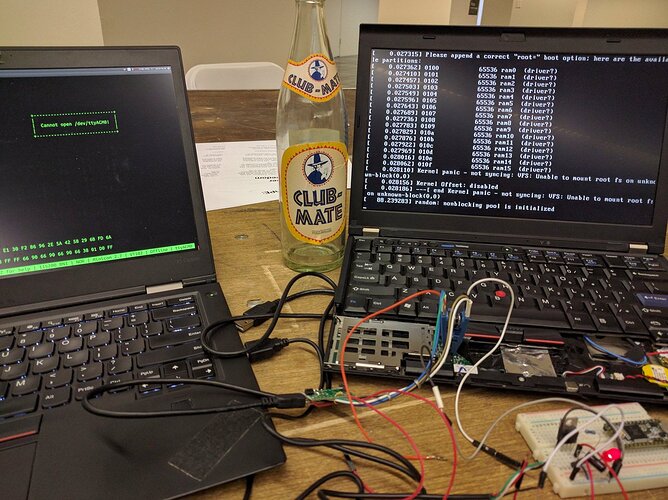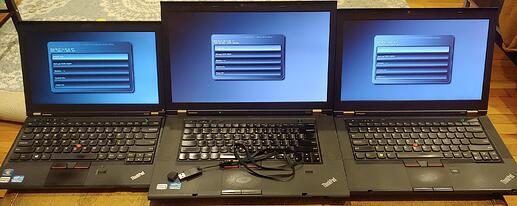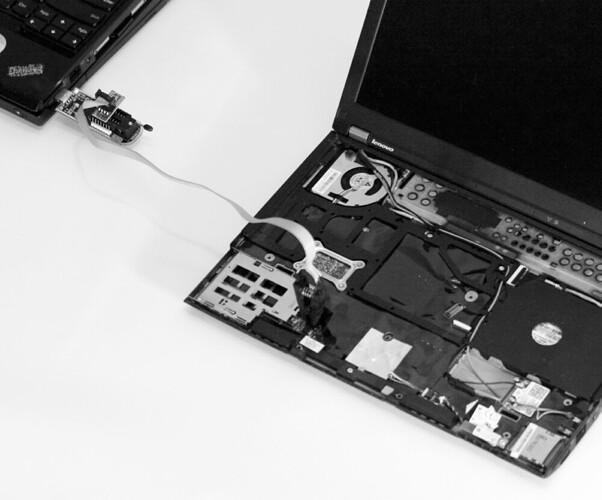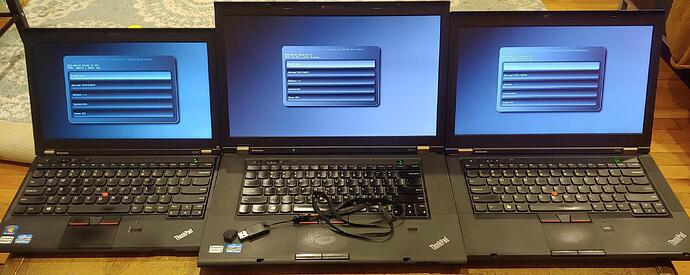This is a long thread relating to future hardware design for secure Mobile (Laptop) End User Devices.
The purpose is to create a start a discussion with the aim of gathering ideas for a possible future reasonably secure hardware framework for EUDs.
-
Statelessness
Not much seems to have been done here, such a shame. I would like to know, with current complexity of SSDs and future RAM (see OpenPower issues), is statelessness going to be possible (i.e: will it be unfeasible without new component standards specifically designed to enable statelessness)? In addition how could statelessness remain secure and user-friendly when we start to compartmentalise hardware (i.e. dedicated router) - can one ‘trusted stick’ be used for separate ‘computers’ in the same device? -
Compartmentalisation of Hardware
NSA mandates dedicated hardware routers for EUDs
The NSA via the CSfC program has publicly declared it does not trust the underlying hardware in EUDs for access to Black Networks. It thus mandates what it calls a ‘retransmission device’ - a dedicated hardware router, to be used to access such networks. The purpose is to ensure that, in case of EUD hardware compromise, the dedicated router continues to securely tunnel traffic protecting from eavesdroppers and safeguarding the network location of the end-user.
There is at-least one company I know of that has integrated this design inside the laptop chasis, see:
Excerpt
The Archon SideArm internal retransmission device (IRD) is a self-contained router (wired, wireless,
and LTE) integrated right into the Archon Zero Vulnerability (ZV) laptop. With its own processor,
memory, Wi-Fi chip, LTE chip, and separate firewalls for Wi-Fi, cellular, and Ethernet, Archon SideArm
relies on the laptop only for power.
The question here is, with our current knowledge - given the current insecurity and complexity of hardware (SSD and RAM essentially becoming mini-computers), which is only increasing - what mechanisms ought to be in place to compartmentalise these different components - thus what standard can we create? Joanna briefly mentioned integrating a ‘proxy’ into the trusted stick, see
Abstractly I would propose splitting the motherboard into standard form-factor isolated boards, with some-sort of dumb KVM switch connecting the keyboard and screen to each for management. The compute board would be conected via a standard high speed interface to the router board. Of-course with power-based hardware switches (for camera, microphone, speakers, network cards, etc) for when not needed.
This, however, is already becoming standard in implementations such as CSfC above, so I’m thinking what further is needed - and, how can it remain easily managable for the user (assuming an ‘advanced’ user, i.e. someone who is already ok using Qubes)?
I am trying to think of practical solutions for the future. Yes there’s RISC-V etc but if we want ‘reasonably secure’ then blindly trusting the CPU seems like a very bad idea. Thus, at the very least, to maintain security whilst using an external network a dedicated router is necessary.
- Passive Intercept/Logging
Passive intercept/logging undeniably has a value in identifying advanced attacks. The question here is not how difficult it is, for it would be rather simple to do with today’s small form factor technologies. The question is, given a reasonably secure hardware design - how useful would passive intercept be?
I can only think, assuming interfaces between boards/components/compute-devices are encrypted, the only real use of passive intercept would be post network-card transmission (i.e. passive monitoring of the U.FL cable for the wireless card, passive monitoring of the ethernet cable for the wired card). This would catch any comms not being securely tunneled*.
*Though, of course, it doesn’t stop the local access point names from being broadcast via the secure tunnel somehow in an encrypted format - passive monitoring would /enable/ any sort of metadata steganography to be caught and this is not a trivial attack.
An example ‘standard’:
Hot-swap NVME SSD drives with readonly switch
Easy removal of drives, quick destruction of data.
Standard form factor for router board, easily replaceable
Standard form factor for passive monitoring board, easily replacable
Standard form factor for network cards
Two wireless network card M.2 slots with C.FL/U.FL to SMA/external-connectors
(useful for SDR stuff, wireless pentesting).
Hardware (power-based) switches for:
Network cards
Display
Speakers
Microphone
Camera
RAM wipe switch
Trusted Boot Port (for trusted stick - containing firmware and readonly partitions)
DUMB I/O switch (to switch between router/computer/passive-monitoring device management)
That’s a really high-level list of requirements, the purpose here is not merely to refine those - but to discuss how they would be technically implemented. (As above, i.e: passive tap on the C.FL and ethernet cables).
This has probably come out as a long ramble, my apologies, I don’t expect many to read, letalone reply.




